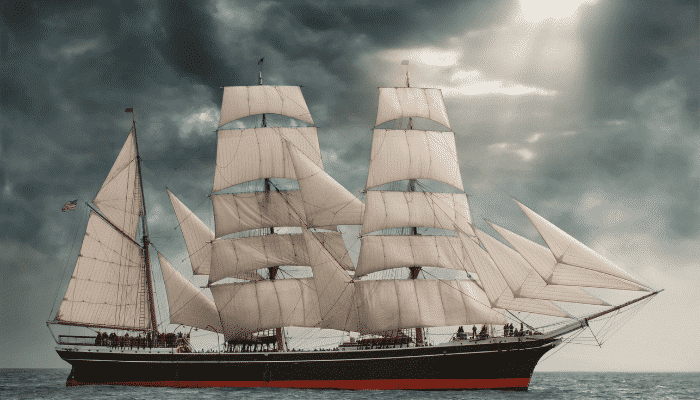Windjammer Sailing Ships: From Past to Present
Like everything else today, even ships have developed into contraptions with hi-tech gadgets and equipments to help them propel better in the oceans. But during the 19th and the 20th century, even with the presence of ship designs encouraged by the industrial revolution, there existed sailing ships known as windjammers, which with their high cargo-carrying capacity and unique design, garnered huge popularity and overwhelming appreciation across the world.
The windjammer was used specifically to carry cargo like timber, food grains and organic fertilisers across continents. The uniqueness of these tall ships was the sails that were used to propel them in the water.

The ship mast had anywhere between three to five sails. Also these sails unlike the conventional ones of that time were square-shaped which meant that the ship was afforded a better movement in the water. This factor helped these ships to maintain their presence even in the mid-20th century (1950) when the steam engine-propelled ships started to gain momentum and popularity.
In terms of their construction, the windjammers’ hull was mainly built either with the help of iron or steel. The masts of the ship were also built by steel which offered further reliability and dependability on the sails of the ship. The usage of these materials ensured the following benefits to the ship as a trade vessel:
- The overall weight of the ship was reduced by a huge proportion which resulted in the ship having a better cargo transporting capacity as compared to the conventional lumber hulls of that era
- The huge cargo carrying capacity further ensured that the ship enjoyed a very profit margin with respect to the amount of goods carried in one trip
- Since wood requires a lot of maintenance especially in the winter months, the iron and steel materials reduced the maintenance aspect of the ships leading to them being preferred over the conventionally hulled ships
However, in this context it has to be noted that the steel hulls were a latter modification to the construction of the ship with sails. When the windjammers were first introduced, they were built with hulls made of iron. Hulls made of steel made a debut only towards the late-19th and early-20th century period of the ships’ existence.
The cargo capacity of the windjammer was between 2000 to 5000 tonnes. The highest cargo capacity offered by a windjammer was the Preussen, which offered a capacity of almost 8,000 tonnes. Because of this high cargo capacity and the invention of the modern ships, the windjammers were started to be used for those goods whose pricing was very low and whose ferrying was not considered to be a priority by the then-modern shipping conglomerates. The ports of destination included Australia and South America where the oceanic journey was considered to be one of extreme hardship without proper eating and drinking facilities.
The crew of the tall ships consisted to about 14 members while the speed offered by the ship is on the higher side being anywhere between 14 to 21 knots.
This overall utility aspect of the ship has made the windjammer to be back in vogue in the commercial marine industry. In today’s times owing to the large scale exploitation of the oceanic environment and ecosystem, it has been proposed to create ships that will use and incorporate the windjammer theme and thus enable to provide a better and safer water-cargo route. In terms of statistics, if such a thing happens, it has been put forth that these windjammer-like ships could take up a market share of 0.5% of the trade vessels. Since nearly 90% of cargo is transferred through the marine routes, the rate conversion is quite high.
With the help of such ship with sails, a lot can be achieved. Speed might be a deterrent but there again the speed of degradation of the environment; ecosystem and the life-forms will be reduced more than substantially.
You might also like to read What are Viking Ships? & World’s largest Cruise Ship
References: Cleantechica, enotes
Do you have info to share with us ? Suggest a correction
Subscribe To Our Newsletters
By subscribing, you agree to our Privacy Policy and may receive occasional deal communications; you can unsubscribe anytime.
Web Stories









REQUEST CLIPPER BOW